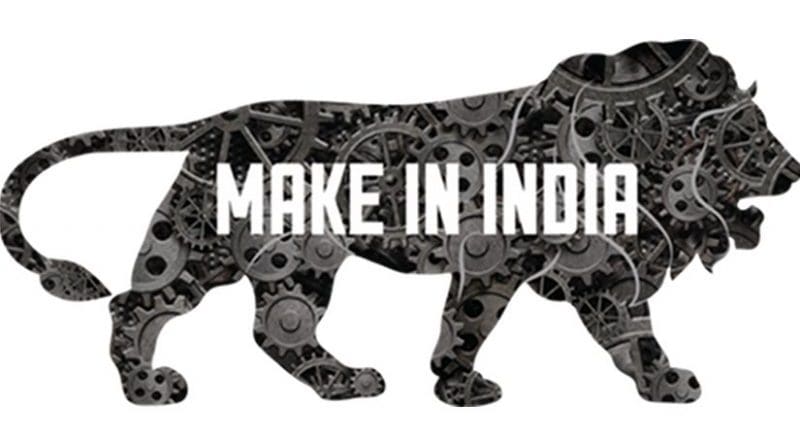Budget To Boost Atma Nirbhar Bharat: New Lease Of Life For Make In India – OpEd
A Japanese person asked how was Atma Nirbhar Bharat (ANB) different from Make In India? Was it a new catchphrase for Make In India, he reiterated? He wondered if the aims of Make In India were to rebuild Indian manufacturing sector with a focus on increasing share of industry in GDP than agriculture and global platform for manufacturing. The objectives of ANB were also to reshape the manufacturing sector to develop domestic supply chain to achieve self-reliance. Was it then the catchphrase changed in the wake of damage to import intensive industries during pandemic , which were over dependent on China? Or, was it a ruse to overshadow the failure of Make in India. He apprehended whether India would revert back to localization policy and import substitution. Against these backdrops, how ANB can be overstated to give a new polarization in Indian manufacturing, particularly when the nation is grappling to recoup the economy, he quipped.
Perceptibly, there is a thin difference between ANB and Make in India. Both bode well for rebuilding Indian manufacturing. The difference lies with dependence on sources of inputs and role of domestic entrepreneurs. First, while the success of Make in India was polarized on global integration, irrespective of import based supply chain, ANB will harp on domestic supply chain. Second, Make in India planned for sectoral growth, irrespective of the role to be played by the categories of entrepreneurs, large or small. ANB will make special focus on MSMEs in restructuring manufacturing sector. Besides, ANB overhauled old industrial policies, such as commercialization of coal mining, higher FDI in insurance and defence, revamping Production Linked Incentive Scheme, new power tariffs and others.
Given the manufacturing sector failing to respond to Make in India, debates aroused over the doable of ANB. Make in India lost the steam. Production decelerated. Growth in manufacturing declined from 5.9 percent in 1917-18 to 0.03 percent in 2019-20 in the GDP growth chart. Unemployment skyrocketed. Prime Minister Narendra Modi was silent on the report card of Make in India in Independence speech on 15th August, 2019 from the rampart of Red Fort. This was despite the fact that government initiated major reforms to encourage investors, such as slashing corporate tax, at par with South East Asian countries and squeezing multiple labour laws in fewer labour codes.
ANB is seen a new lease of life to Make in India. Make in India was reinvented with focus on self reliance and domestic supply chain. However, self reliance is not new. During Indira Gandhi era, self reliance was deployed with multiple schemes for protectionisms, such as import substitution, localization of industry and high tariff. Eventually, India was isolated and delinked from global integration. Manmohanomics opened the economy in 1991 with major reforms, outdoing the license Raj. Modinomics rebooted the open economy and pitched the nation for global hub for manufacturing.
Given the lackluster growth in Make in India, the Modi 2 government drafted a new “Strategy for India @75” – a master plan to decode the new challenges to boost the economy. NITI Aayug was the main architect for the new strategy.
NITI Aayug observed an imbalanced investment in the industry indulged in failure of Make in India. It unveiled that capital intensive industry was given priority, such as in automobile and drugs and pharmaceutical. This left non-capital and labour intensive industry in disarray. As a result, bank loans became the paucity for the growth of this sector. Eventually, MSMEs had to harp on black money. With black money dried away due to demonetization, a large number of MSMEs, nearly 40 percent, downed their shutters. As a matter of fact, India is known for poor banking to the private sector. In 2018, domestic credit to private sector by banks as a proportion to GDP was 50 percent in India. This is in comparison to 141 percent in South Korea, 158 percent in China, 112 percent in Thailand and 61 percent in Brazil.
Further, big entrepreneurs stayed away from investing in MSMEs. They opted for high capital or skilled labour intensive industries. Eventually, it let a number of labour intensive industries shifted to technology oriented. These resulted shrinkage in employment .
ANB was an important dynamism in the industrial policy, while announcing the Budget for 2021-22 by Finance Minister Nirmala Sitharaman . In May 2020, government announced first ANB financial package for MSMEs. Subsequently, two more ANB packages were announced. These, including RBI measures, accounted for 13 percent of GDP. Besides financial packages, government adopted several reforms to give a new shape to this sector. It redefined MSME , enlarging the scope for higher participation in the economy. It focused on health care, physical financial capital on infrastructure, reinvigorating human capital and innovation in R&D.
The inward looking with trigger in protectionism began in last year’s budget 2020-21. NDA’s landslide victory in Lok Sabha election in 2019 unleashed a new hope for re-building Make in India. It set off new challenges to lead the nation to a US $ 5 trillion economy by 2024-25. The new challenges included lobbing of protectionism and liberalization simultaneously. Budget 2020-21 proposed rise and fall in custom duty to give both protection and stimuli to the emerging industries. It increased custom duties where Indian entrepreneurs emerged competitive and succumbed to China where India was unviable for low cost production.
Custom duties were raised on components and parts of mobile phones, electronic motors, toys , electric appliances and the products which are labour intensives. At the same time, custom duties were reduced on certain raw materials and component of auto parts, such as catalytic convertors and CBU ( Completely Built Units) for commercial vehicles
Budget 2021-22 reinforced the momentum for protectionism under ANB. It removed custom duty exemptions on 80 items. It has decided to review 400 items more for withdrawal of custom duty exemptions. Expectedly, more are in the offing.

